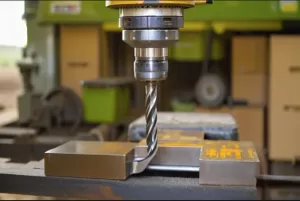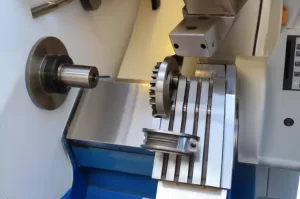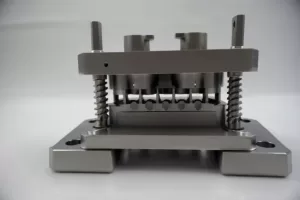April 2, 2025
Grooves of modern machine tool fixtures and their development direction
With industrialization advancing, China’s modern machine tool fixtures now include combined fixtures, group fixtures, automated fixtures, and CNC machine tool fixtures. Each type has unique characteristics and applications.
As manufacturers demand higher precision and efficiency, engineers are focusing on developing advanced fixture designs.
1. Current Status of Modern Machine Tool Fixtures
Machine tool fixtures have improved alongside industry advancements. However, many still lack versatility and precision, which limits machining efficiency. To solve these issues, companies are optimizing fixture designs. The following types of fixtures are commonly used:
1.1 Combined Fixtures
Engineers design combined fixtures by integrating different shapes and specifications into a single fixture. This approach improves adaptability and reduces material waste. These fixtures enhance versatility and maintain processing accuracy across multiple machine tools. However, their large size and heavy weight make installation difficult. The high initial investment further limits their widespread adoption.

1.2 Group Fixtures
Group fixtures contain both fixed and replaceable components. Workers can adjust the replaceable parts according to processing requirements. This feature makes group fixtures highly versatile and precise. Compared to combined fixtures, they offer better cost efficiency. However, they still lack the automation necessary for modern machining.
1.3 Automated Fixtures
Automated fixtures are becoming more common in automated machining environments. These fixtures enable rapid, manual-free replacement, which significantly improves efficiency. Engineers must ensure accurate fixture delivery and quick swapping during the design process. Depending on the needs, these fixtures use pneumatic, electric, or hydraulic power.
High-speed cutting generates large amounts of chips. To prevent disruptions, designers equip automated fixtures with built-in chip-cleaning mechanisms. They also apply lubrication to the contact points between the fixture and the machine tool. This reduces wear and extends the fixture’s lifespan.
1.4 CNC Machine Tool Fixtures
The growing use of CNC machine tools has increased the demand for high-precision fixtures. These fixtures must enable quick clamping, rapid replacement, and flexible coordinate conversion. Many CNC fixtures also include automatic tool-setting functions. These features support multi-specification, high-precision, and multi-process machining.
2. Future Development Trends of Modern Machine Tool Fixtures
2.1 Standardization
Modern fixture development should prioritize standardization. Manufacturers should establish unified processing standards for general and combined fixtures. This approach will promote commercialization and enable large-scale production. As a result, fixture costs will decrease, and compatibility across different machine tools will improve.

2.2 High Precision
Rising accuracy requirements demand higher precision in fixture designs. Engineers improve precision by incorporating advanced structures such as self-centering three-jaw chucks and multi-toothed discs. To achieve this goal, they must apply innovative design methods that enhance machining precision and product quality.
2.3 Improved Efficiency
Intensifying competition in the machining industry forces companies to prioritize efficiency. Fixtures must support high-speed machining while reducing auxiliary time. Engineers design fixtures to enhance productivity, maintain process continuity, and improve safety. They also aim to reduce manual workload.
For example, self-centering three-jaw chucks on high-speed lathes operate at speeds up to 10,000 RPM. Electric vises clamp workpieces five times faster than manual clamping. These advancements significantly boost productivity and help manufacturers increase profits.
2.4 Greater Flexibility
Modern machining requires flexible fixture designs that adapt to various processing needs. Engineers should replace traditional non-detachable fixtures with modular, easily interchangeable designs. As high-precision and high-speed processing demands increase, designers must develop fixtures that support automatic disassembly and replacement. This approach will further improve efficiency.

3. Conclusion
As processing and manufacturing requirements evolve, engineers continue to enhance modern machine tool fixtures. They focus on improving standardization, precision, efficiency, and flexibility. With technological advancements, fixture designs will become even more sophisticated. Designers must embrace creativity and innovation to develop solutions that meet modern machining needs. Their efforts will drive steady industry growth.